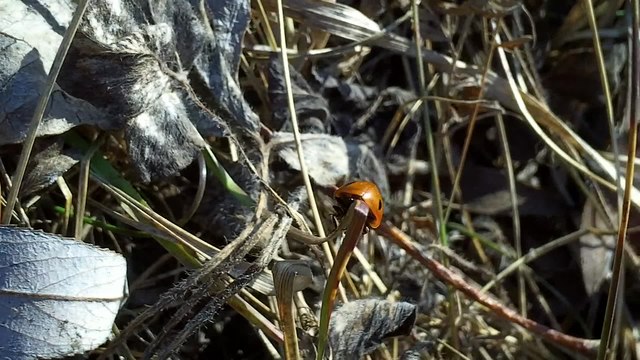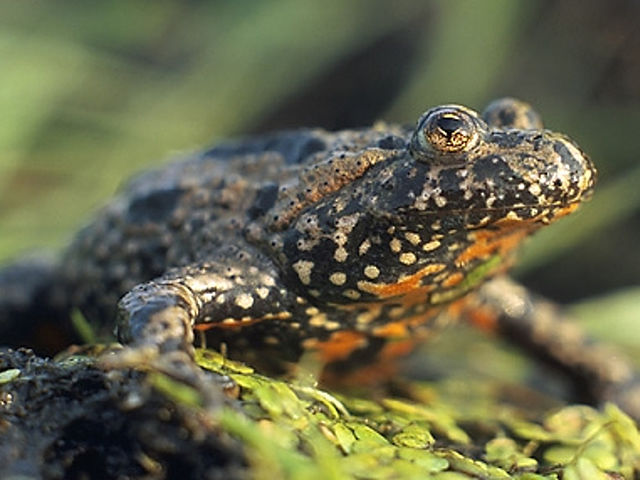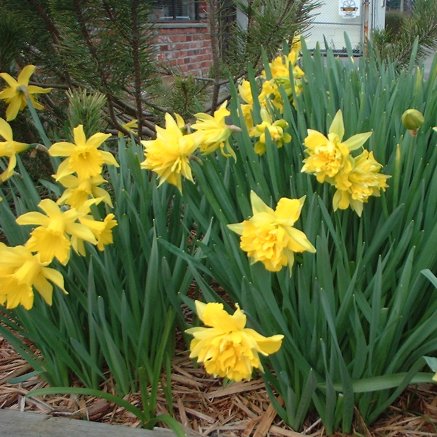Gardening is about creating joy and this quote from Alfred Austin (an English Poet) sums it up quite well.
“The glory of gardening: hands in the dirt, head in the sun, heart with nature. To nurture a garden is to feed not just on the body, but the soul.”
A Draw Hoe
2. SECATEURS
Why Use Secateurs? - They are used for pruning shrubs and trees, cutting stems up to an inch but they can also be used for taking cuttings.
Anvil Secateurs – This is where one of the blades is sharpened and this then cuts downwards onto a flat block, a bit like the cutting action onto a chopping board (the anvil).
Bypass Secateurs - This is where the 2 blades pass each other and make a good clean cut. It works in a similar way to a pair of scissors.

This is all very true but not everyone wants to spend every hour of the day maintaining their garden.
Most of us are time poor and would rather spend the minimum time possible when it comes to preparing the ground for planting, weeding, pruning and other garden maintenance.
The Right Tools
· For the best results you should ensure that you have robust, quality, gardening tools, which are fit for purpose and they will help to make gardening so much more enjoyable. With the right, essential tools for your garden - life can be so much easier. The key phrase here is “The Right Essential Tools for your Garden” because depending on what type of garden you have will dictate to a certain extent if a particular tool is an essential tool for you. This will include factors like size of the garden, types of plants in there, is there a lawn to consider? or is it low maintenance?
Example: There would be little need for a wheel barrow in a small 3m x 3m, low maintenance garden.
Spend Less Time in Your Garden
· This also means ultimately you can spend more time relaxing in the garden instead of tending to it
1. THE GARDEN HOE
Why Use a Hoe? – It’s a versatile tool, used to loosen and break up the soil, shaping soil (like forming beds), removing weeds and aerating the soil.
Why Use a Hoe? – It’s a versatile tool, used to loosen and break up the soil, shaping soil (like forming beds), removing weeds and aerating the soil.
The Dutch Hoe
The most commonly used hoe in the UK is probably the Dutch hoe.
Each side has a sharp blade which means you can cut backwards or forwards (i.e. a pull or push action) cutting the weeds roots just below the surface of the soil.
A Draw Hoe
Tends to have a wider downward facing blade and should be used in a slicing or chopping action on harder soils.
2. SECATEURS
Why Use Secateurs? - They are used for pruning shrubs and trees, cutting stems up to an inch but they can also be used for taking cuttings.
Two Types
Anvil Secateurs – This is where one of the blades is sharpened and this then cuts downwards onto a flat block, a bit like the cutting action onto a chopping board (the anvil).
Can be used for cutting back dead wood as they tend to crush softer plants instead of providing a clean cut.
Bypass Secateurs - This is where the 2 blades pass each other and make a good clean cut. It works in a similar way to a pair of scissors.
Great for cutting shoots down and in general they are very versatile
If you’re budget dictates that you’re looking to buy one or the other we recommend the bypass secateurs for their versatility around your garden.
They are also essential for fruit trees, in order for them to produce plenty of high quality fruit, for the best results use a sharp pair of secateurs. If you don’t have the time then we recommend that you entrust this to a local professional gardening company.

3. SPADE
Why Use A Spade? - They are designed for digging, whether this is in your garden or allotment, breaking up big clumps of soil, loosening it, also edging lawns& bedding.
Try to buy a good quality spade that is comfortable to use and if you’re a taller person, you need to get one with a longer handle.
4. GARDEN FORK
Why Use A Garden Fork? - They are used for digging, as well as loosening, aerating, great for removing weeds with shallow roots and cause less damage to worms than spades.
A good garden fork helps to make life easier in your garden by reducing the effort required to work the soil, which has to be good news.
5. RAKE
Why Use a Rake? – Great for levelling soil, removing debris and preparing bedding.
A Lawn Rake
I decided to also mention the lawn rake as they are incredibly important because they have flexible teeth and will remove grass clippings, leaves and moss.
6. WATERING CAN & GARDEN HOSE REELS
Why Use a Watering Can? – These are used to water plants by hand and ensure they have sufficient water, in metal or plastic versions.
Why Use a Garden Hose Reel? – It can quickly do so much more, including watering plants and lawns in any sized gardens. Once you’ve finished with them (if it’s the type that’s fixed to the wall) you simply turn off the water and reel it back in
There’s even greater flexibility when using an array of attachments with your garden hose reel like: Spray guns, sprinklers and other attachments that allow you to clean the patio, garden furniture or the car.
7. GARDENING GLOVES
Why Use Gardening Gloves? – They can protect you from a dip in temperature, Cuts &scratches, chemicals and sharp objects like glass and needles.
There are gloves you can buy that will give you protection from colder conditions.
Other types of gardening gloves are more robust to protect you from getting cut by roses or if you’re out on the allotment from sharp objects.
The ones shown above are the exact gloves that I wear to provide such protection.
There are also multi-purpose gloves you can buy that will give protection from most of the above and be cheaper than buying 3 different types of glove.
8. LAWNMOWER
What Type of Lawnmower Should I Use? – The right lawnmower for you will be dictated by:
· Lawn size
· Is it on a slope?
· Are you near a power supply?
· Would you prefer Greener Solutions?
· Are you an older or disabled person?
Lawnmower types include: cordless – cylinder – electric – hover – petrol – push or walk behind – ride on - rotary & self-propelled
9. WHEELBARROW
Why Use a wheelbarrow? – Makes transporting garden materials easier and quicker meaning you’ll spend less time in your garden.
They are used for carrying items from one location in your garden or allotment to another including: tools, plants, garden waste & heavy loads.
Final Thoughts
|
We all want to be proud of our gardens and with the little free time we have, ideally we want to spend some of that time relaxing or entertaining in the garden. You may also want to use some of that time doing what you need to do in order to have a great garden. In the end it is a balancing act between how much time you want to spend maintaining your garden& how much time you want to be relaxing in it.
Therefore using the right essential tools for a particular job and ensuring that they are of good quality and well maintained will make life easier for you
· Spend Less Time Maintaining Your Garden – You’ll spend less time working in your garden also more time relaxing and appreciating it. These are the benefits of using robust tools that are fit for purpose for dealing with most gardening tasks
· Protecting Nature – Using a garden fork to dig the soil is not only easier but also there is less damage done to worms than using a spade
· Less Damage to Plants – Using bypass secateurs to cut softer plants ensures a cleaner cut instead of unnecessary damage to fragile plants or shoots
· Less Back and Joint problems - If you’re using the right tools and the right lawnmowers they will take some of the strain, instead of your body
· Greater Motivation – A critically important factor because if you enjoy venturing into your garden& using those essential tools in the right way they will drive great progress in your garden. This in turn will have a positive knock on effect because you’ll want to achieve more
· Less Stress - Before you know it you’ll start to love making a difference, realise how incredibly therapeutic and de-stressing gardening can be
Image References
Attribution
The Garden Hoe: By The Banner (Own work) [CC BY-SA 4.0 (http://creativecommons.org/licenses/by-sa/4.0)], via Wikimedia Common
Lawn Rake: By AlbertCahalan (Own work) [Public domain], via Wikimedia Commons
Lawnmower: From the product range 2016, ATCO catalogue
Video Reference
Attribution
Title: Practical Garden Tools
Eastward Missions, Standard You Tube License
More Great Blog Posts
Your Gardening Blog - Hints, Tips, Useful Gardening Information & Quizzes
What do You Think?
Did you find this blog post and our hints and tips useful, is there anything that you could add or you believe is missing?
Do you have any stories or experiences you want to share in connection with what we’ve been talking about?













